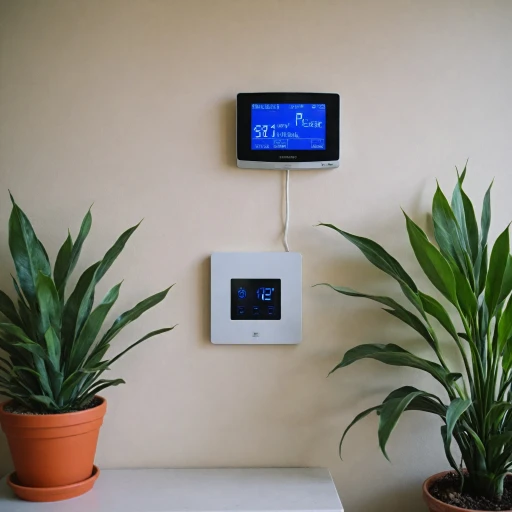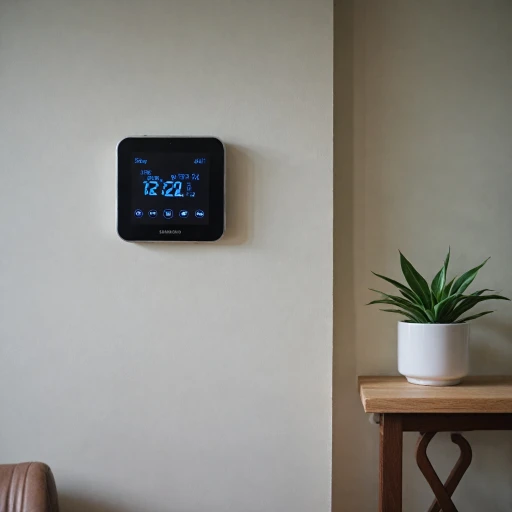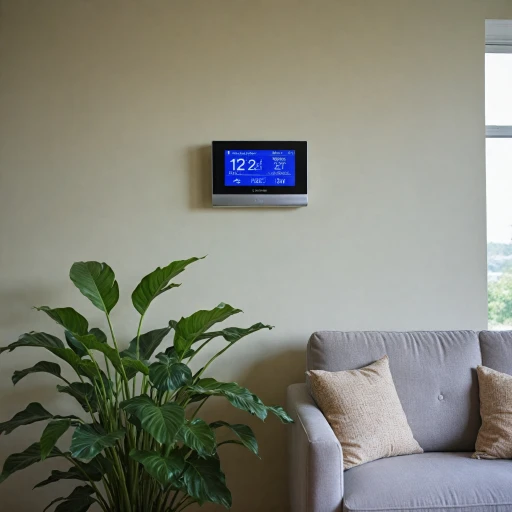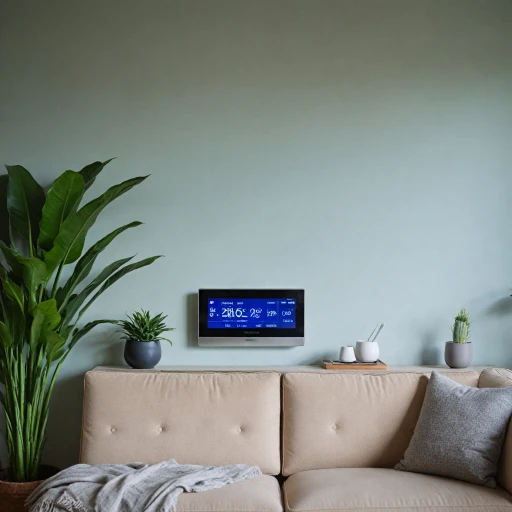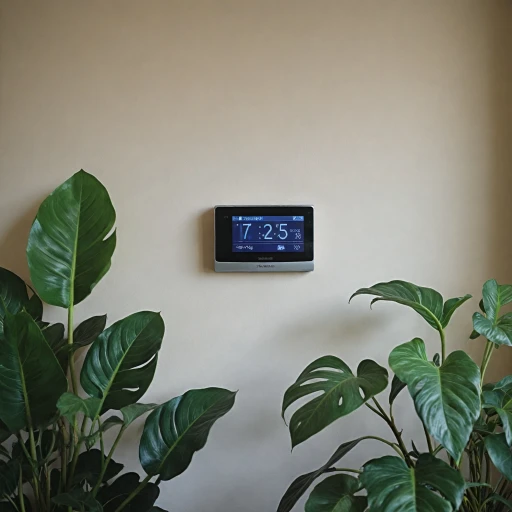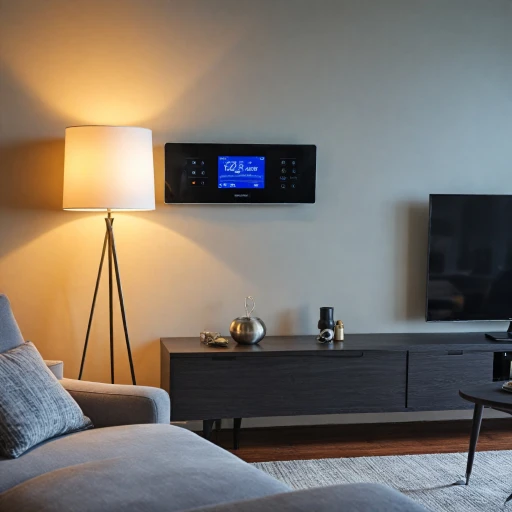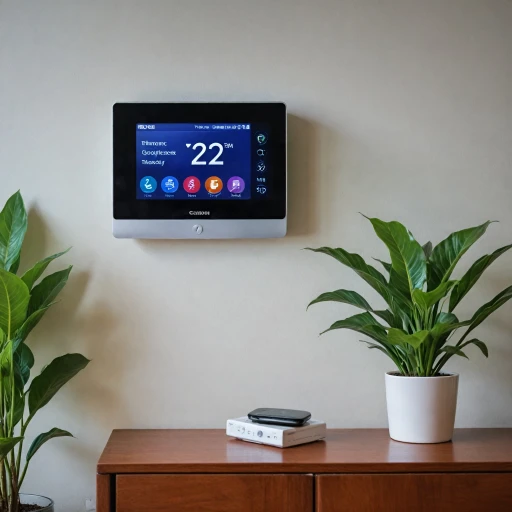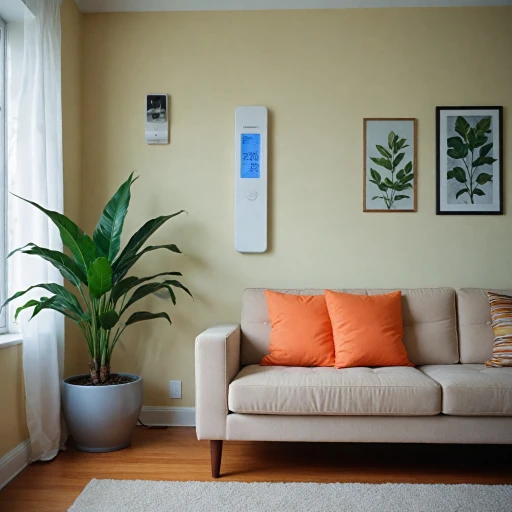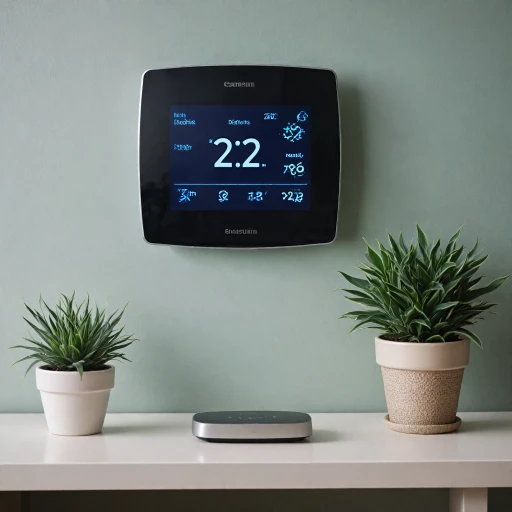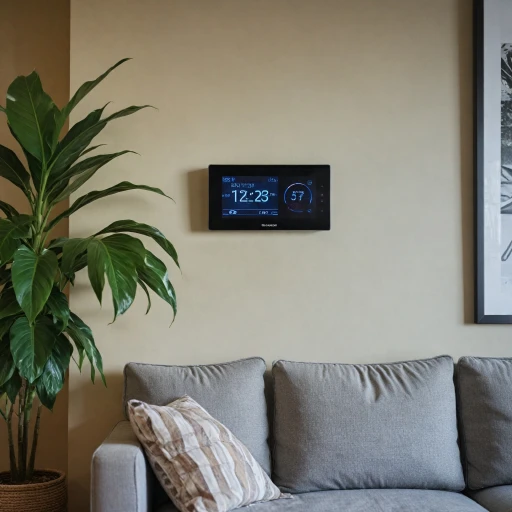
Understanding Battery-Powered Thermostats
Introduction to Battery-Operated Thermostats
Battery-powered thermostats, often recognized for their convenience and flexibility, are an appealing option for those looking to upgrade their heating and cooling systems. These thermostats run on battery power, eliminating the need for a direct wire connection to the HVAC system. This functionality can be particularly advantageous in homes where the traditional wiring infrastructure may be challenging to navigate. Battery-operated models are rapidly gaining traction, with options such as the ecobee smart thermostat and the Google Nest gaining popularity on platforms like Amazon. These devices offer smart features, including compatibility with voice assistants like Alexa and programmable settings that can adapt to your daily schedule.How Battery-Powered Thermostats Work
The primary characteristic of battery-powered thermostats is their ability to maintain functionality independent of electrical wiring. These thermostats include built-in power systems, ensuring they remain operational even if there is an energy interruption. They are often designed as a programmable thermostat, allowing you to set specific temperature preferences that enhance energy efficiency. Moreover, with the integration of smart technology, these thermostats can interact effortlessly with other smart home devices. Some top models in the market also offer learning capabilities similar to those found in products like the Nest Learning Thermostat. This means they can learn your heating and cooling preferences over time and accordingly adjust the temperature settings to ensure optimal comfort.Why Consider a Battery-Powered Option?
Opting for a battery-powered thermostat presents several advantages. Without the constraint of wiring, installation can be more straightforward and less time-consuming, making these thermostats a viable choice for many homeowners. Additionally, the battery operation ensures that the thermostat remains functional in power outages, maintaining your desired indoor climate without interruption. When looking for the best smart thermostat for your needs, exploring options like the ecobee and Amazon smart thermostats can provide reliable performance and broad compatibility with various home systems. These thermostats often come with user-friendly interfaces and offer various programmable features, making them a versatile choice for anyone wanting to maximize their energy efficiency while maintaining control over their home's temperature settings.Advantages of Battery-Powered Thermostats
Enhanced Flexibility and Convenience with Battery Technology
Battery-powered smart thermostats bring unmatched flexibility and convenience to homeowners and businesses alike. Unlike their wired counterparts, these systems do not rely on a traditional electrical wire connection, granting them the freedom to be installed virtually anywhere that best suits your space without the need for extensive re-wiring. This is particularly beneficial for those living in older homes where intricate wiring may pose a challenge. A significant advantage of utilizing a battery-powered thermostat is the ability to maintain seamless operation even during power outages, ensuring that critical functions like temperature regulation continue without interruption. As a smart innovation, these thermostats can be integrated with modern platforms like Amazon Alexa or Google Nest, creating a cohesive smart home environment that adjusts to your personal heating and cooling needs. Installing a programmable thermostat that operates independently of the main power supply has several key benefits:- Energy Efficiency: By offering programmable settings, such as day and night modes, these thermostats significantly reduce energy consumption by automatically adjusting heating and cooling patterns, ultimately leading to lower utility bills.
- User-Friendly Interface: With intuitive interfaces, many top models like Ecobee or Nest Learning offer an easy-to-use experience, providing quick access to temperature adjustments and scheduling options that cater to different user preferences and daily routines.
- Versatility: Whether you utilize a heat pump, king electric system or another HVAC system, battery operated thermostats offer compatibility with a range of heating and cooling solutions. Their wireless nature means they can be positioned in the optimal location for temperature accuracy.
- Advanced Functionality: Some battery-powered smart thermostats come equipped with additional sensors or capabilities such as humidity monitors, providing precise environmental control within the home.
Challenges and Considerations
Pitfalls and Precautions to Consider
When considering a battery-powered thermostat for your home, it's crucial to be aware of potential challenges and considerations. While these thermostats offer remarkable benefits, there are certain aspects you should be mindful of so you can tackle them proactively.- Battery Life and Replacement: One of the primary considerations of adopting a battery-operated thermostat is the limited battery life. Depending on the brand and usage, such as with smart thermostats like ecobee and Google Nest, you may need to replace batteries periodically. To avoid unexpected disruptions in your heating and cooling, routinely check the battery status.
- Compatibility Issues: Compatibility with existing HVAC systems can be a concern, especially for older or more complex setups. Models like the ecobee smart or nest learning thermostat may require adaptations for smooth integration. Whether dealing with heat pumps or single-stage systems, verifying compatibility should be a top priority. Not all thermostats are programmable or work seamlessly with platforms like Amazon Alexa.
- Installation Challenges: Although battery-powered thermostats eliminate the need for complex wiring, installation can still present difficulties. Ensuring correct placement and set-up is vital for optimal operation, especially in maintaining consistent temperature control and leveraging energy savings. This involves careful handling of connections with any existing HVAC system.
- Signal Range and Connectivity: If you're leaning on smart features, signal range and connectivity could present issues — particularly if your WiFi signal is weak or spotty. This can affect control through platforms like Alexa or Google Nest. For enhanced home comfort and monitoring, consider optimizing your Wi-Fi range. For more on this, explore our insights on enhancing home comfort with a Wi-Fi thermometer.
- Temperature Precision: While battery-powered models from top brands, like those featured on Amazon, offer precise temperature control, inaccuracies can sometimes occur due to sensor limitations or placement. Regular calibration and strategic placement help maintain accuracy and ensure consistent heating and cooling performance.
Installation Tips for Optimal Performance
Ensuring Optimal Setup for Efficient Performance
When it comes to optimizing the performance of a battery-powered thermostat, even minor tweaks can make a significant difference. While the intricacies of battery-powered systems differ slightly from wired ones, the overarching aim is to achieve peak operational efficiency and comfort within your home.
Start with choosing the right location for installation. A central spot that accurately reflects the average room temperature is ideal. Avoid placing the thermostat near direct sunlight, heat-emitting appliances, or drafty windows.
Once installed, connecting your device to Amazon Alexa or Google Nest systems can enhance its utility. Most battery-powered thermostats, including popular models like ecobee smart thermostats, offer extensive smart features. These can be programmed to work seamlessly with various heating and cooling systems, from traditional single stage systems to more sophisticated heat pump setups.
Always ensure that the batteries are fresh to prevent interruptions in service. A regular check every few months, especially before transitioning to a new season, can keep your thermostat running smoothly. Battery types vary, so it's wise to keep spares on hand for hassle-free replacement.
Calibration is another critical step. This ensures your programmable thermostat reads the correct temperature and adjusts the heating and cooling output accordingly. Consult the thermostat's manual for precise calibration instructions tailored to your specific model.
Integration with smart home systems via platforms like amazon smart and Amazon Alexa offers additional control and energy-saving opportunities. These connections allow setting up day-to-day routines effortlessly, aiming for energy efficiency and comfort.
Comparing Battery-Powered and Wired Thermostats
Comparison Between Battery-Powered and Wired Thermostats
When deciding between a battery-powered thermostat and a wired model, several factors come into play, each impacting your decision-making process. Both options offer distinct benefits and challenges, making it essential to evaluate your needs before making a choice. Battery-powered thermostats are known for their ease of installation and versatility. They do not require any electrical wiring, which means less hassle during setup. This feature makes them particularly appealing for those who prefer a DIY approach. In contrast, wired thermostats typically require professional installation to ensure accuracy, especially in complex HVAC systems. With advancements in technology, smart thermostats like the Ecobee Smart and Google Nest have emerged as leaders in the smart home market. These systems offer features such as programmable temperature scheduling and integration with platforms like Amazon Alexa, broadening their functionality. However, battery-operated units have carved a niche by offering battery longevity and energy savings, especially in situations where wiring is complicated or expensive to install. On the energy efficiency front, wired thermostats slightly edge out battery-powered models due to their direct power source. On the other hand, battery-powered thermostats avoid the potential of energy loss through wiring, which can occur over time in wired systems. This advantage might appeal to eco-conscious consumers seeking sustainable solutions. Notably, modern thermostats, irrespective of their power source, emphasize compatibility with HVAC systems, offering adaptable solutions for heating cooling needs. They often include programmable features which contribute to energy conservation and efficient power usage. In terms of integration, top smart thermostats offer robust support for various smart home ecosystems. Users appreciate the seamless integration, allowing them to control their home environments conveniently with voice commands through devices compatible with Amazon Alexa or Google Nest. Ultimately, the best choice of a thermostat is shaped by your specific needs. Whether it’s optimizing energy in a single-stage heat pump setup or managing a premium heating system like King Electric, assess the balance between energy efficiency, installation ease, and smart features when making your decision.Future Trends in Smart Thermostat Technology
The Evolution of Smart Thermostat Innovations
The landscape of smart thermostats is ever-evolving, driven by technological advancements and increasing consumer demand for energy-efficient and cost-effective solutions. Integration with AI and voice assistants like Amazon Alexa and Google Nest has made managing home climates simpler than ever before. As we look into the future, several innovative trends are emerging that promise to further enhance the features and usability of battery-powered thermostats.- AI and Machine Learning: Advancements in AI and machine learning continue to revolutionize the functionalities of smart thermostats. A learning thermostat, such as the Nest Learning, adapts to user patterns, optimizing heating and cooling schedules to maximize energy savings without sacrificing comfort. These systems learn from user habits, providing customized temperature settings automatically.
- Integration with Smart Home Systems: The integration capabilities with existing smart home ecosystems have expanded considerably. A programmable thermostat that connects easily with Amazon Alexa or other smart devices provides an added layer of convenience, allowing users to control room temperatures through voice commands.
- Enhanced Energy Monitoring: Top smart thermostats now offer comprehensive energy monitoring tools, enabling homeowners to track their energy consumption in real time. This capability helps users make more informed decisions about their energy use, contributing to reduced utility costs and a lower environmental footprint.
- Wireless and Remote Control: With increased demand for wireless solutions, battery-operated smart thermostats offer the flexibility for installation in diverse locations, without the constraints of wired connections. Remote control via smartphones or tablets, facilitated by dedicated apps, makes it possible to adjust settings from anywhere.
- Improved Compatibility with HVAC Systems: The best smart thermostats are now compatible with a broader range of HVAC systems, including single stage heat pump and more complex heating systems like King Electric. This ensures that consumers can upgrade their thermostats without needing to overhaul existing HVAC infrastructure.

